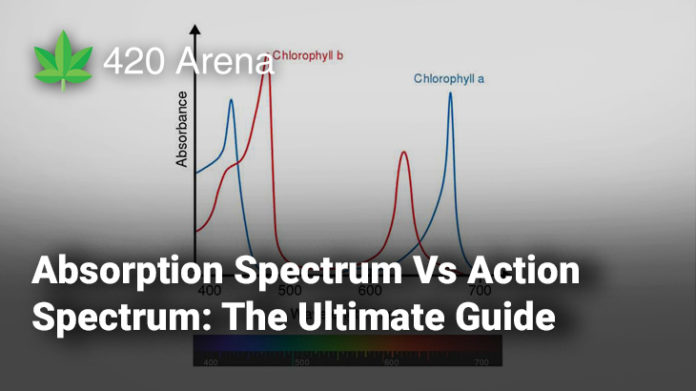When it comes to the kind of light that your plants need, there’s too much technical knowledge that is actually needed to come out with the “best light” for growing marijuana. Normally, the burden of this won’t really fall on the grower as the technical research is usually done by the manufacturers. However, if growers were to know about the technical aspects of light, it would be an added advantage for them. Over the course of this article, we shall be talking about two of these concepts which are the absorption spectrum vs action spectrum – we shall try and simplify all the science here for the easy understanding of our readers.
Light is very important for all plants – regardless of them growing indoors or outdoors, light is the one necessity for them to grow well! Over the course of this article, not only will we be looking at the absorption spectrum and the action spectrum of light, but also address the basics: why do plants even need light? We shall also take a quick look at the different kinds of lighting options in relation to the two spectrums that we are going to discuss.
Why Do Plants Need Light?
Plants need light for practically everything! Most plants require lighting for two main processes: the generation of chlorophyll and the process of photosynthesis. Photosynthesis is the process by which plants convert sunlight into energy. Light is needed by plants for many other reasons too – light is responsible for the opening and closing of the stomata which helps the plants ‘breathe’. Light is also responsible for the overall growth of the plant as well as the growth of specific parts such as branches and roots – good sunlight helps space out the branches as well as helps improve the root mass. These are all the reasons as to why a plant needs lights.
Sunlight in itself is good enough for the growth of the plants. However, not all plants can be grown outdoors and when you are growing indoors, you require grow lights. These are special lights which basically recreate the sunlight indoors by combining lights of different colors and wavelengths together.
When we talk about light, we are essentially talking about the Electromagnetic Spectrum – a part of which is the visible spectrum, which is visible to the human eye that ranges between 380 to 740nm. However, there are two more concepts that are important to us – these are the absorption and the action spectrum, and the difference between absorption spectrum vs action spectrum – let us take a closer look at all these three details in the upcoming sections:
What is Absorption Spectrum?
The answer to why are plants green comes from understanding the absorption spectrum! When you look at the sunlight – it is made up of different waves carrying different colors and different properties. The absorption spectrum is different for different materials – it is basically a spectrum made up of lights that are actually absorbed by the surface that they pass through. Since green light is the one that is least absorbed by the plants, it essentially bounces off them and reaches our eyes making the plants look green to us.
What is Action Spectrum?
While sunlight is made up of different wavelengths, not all of it is beneficial for plants. There’s only some part of the visible spectrum that is getting absorbed by the plants and is, therefore ‘useful’ for them. In the simplest of terms – the light that comes from the sun only has certain wavelengths that are of actual use to the plants. It is only between the wavelengths of 400 to 700nm that photosynthesis can be achieved.
Even in that, there are two specific sets of wavelengths that form the core action spectrum – these are the red (600nm-700nm) and blue (400nm-500nm) wavelengths. A distant third is then the green light that falls somewhere between the two. To sum it up, the action spectrum is the one where the real action happens!
Absorption Spectrum vs Action Spectrum: What’s The Importance?
The understanding of the absorption spectrum and action spectrum together helps the growers realize that it is the red and the blue lights that are very important for the plants. While the action spectrum shows which lights are used by the plants to generate energy, the absorption spectrum shows the lights that are absorbed by the plants and which are the ones that are not. Putting the knowledge gained from these two together, we can come to an inference that red light and blue light form the core part of a plant’s growth and well-being.
Most growers know that manufacturers make LED grow lights that are mostly a combination of red and blue lights but don’t really question as to why this is. Understanding the absorption spectrum vs action spectrum concept will help clarify it for you.
What Are The Different Colors in the Visible Spectrum of Light?
The visible spectrum ranges from about 380nm to about 740nm (different people estimate it differently but this is the largely acceptable format). There are lights of different colors which form the visible spectrum and each of these lights have their own benefits for the overall growth and welfare of the plant. Let us take a closer look at all these colors:
- Violet (380nm to 450nm.)– The violet light doesn’t really serve much of a purpose for the overall growth and development of plants but it has been associated with functions such as improving the flavor and smell of the plants.
- Blue (450nm to 495nm)– The blue light is key to the vegetative growth phase and is extremely important for the development of the plant as this is the light that gives the plants the ‘energy’ to prepare food.
- Green (495nm to 570nm)– As we have observed above, the green light doesn’t really play any major role and most of it is bounced off the plant.
- Yellow (570nm to 590nm)– The yellow light too is quite similar to the green light and is also bounced off the plant.
- Orange (590nm to 620nm)– This kind of light helps the plants prepare for the upcoming flowering which is then triggered by the red light. This is more of a precursory light.
- Red (620nm-740nm)– One of the most important colors of light that your plants need – red light is very important during the flowering phase and forms a key part of the action spectrum.
Understanding UV and IR Lights
In addition to these lights of the visible spectrum, there are lights above and beyond them too. Before 380nm you’d find ultraviolet lights while after 740nm, you’d find infrared lights. These lights are not visible to the human eye but there are certain animals that can actually see them – giving them a very different perspective of the world that they live in than from us!
UV lights, formally known as Ultraviolet lights, before the violet lights and are beneficial for the plants for the development of resins. These resins help the plants get the right kind of flavour and smell due to the presence of flavonoids and terpenes inside them. UV lights also help improve the root mass of the plants, as well as help ward off bacteria. IR lights (Infrared Lights) are useful during the flowering stage and they help the growers get bigger and better flowers when the plants are ready!
Best Grow Lights for the Action Spectrum
The action spectrum is the more important of the two considering this is the light that plants actually use for the process of photosynthesis. Hence, you need to know which type of grow lights can you make use of to get the best lights that fall in the action spectrum. Here are the four types of grow lights that you could consider:
1. High-Pressure Sodium Grow Lights
Popularly known as HPS grow lights, these grow lights are a type of High-Intensity Discharge lighting systems (HID lights), which carry the red lights. These lights are needed throughout the growth of your marijuana plants but their importance grows during the flowering phase of the marijuana plant as that is where the red lights have a bigger role to play.
2. Ceramic Metal Halide Grow Lights
This is another kind of HID lights, but instead of the red HPS lighting, a Metal Halide (MH) light offers the cool blue shade of lights that is needed during the early stages of growth and during the vegetative phase of growth of the marijuana plant. Together, the MH and HPS lights provide the red and blue lights that form the core of the absorption spectrum as well as the action spectrum.
3. LED Grow Lights
The latest kind of lighting systems that people have been using of late, LED grow lights are quite beneficial because here you get everything under one panel – both red and blue lights are present here, along with the provision for UV and IR lights as well! LED grow lights are generally considered the best not only because they’re a source of great action spectrum lighting but also because they are very efficient when it comes to energy consumption too. These lights also emit very little heat and offer dimmable lighting – all of which is great for your plants!
Frequently Asked Questions About Grow Lights
Here are the answers to some of the most common and frequently asked questions about grow lights that we often get asked:
1. Can plants grow without a grow light?
There are some very rare plants which can grow without light – such as some cacti that grow in the deserts. However, for any regular plant, light is a must-have. While some plants need less light and others need more, all plants do need light as it helps them with processes such as photosynthesis and the generation of chlorophyll. Plants can grow without using a ‘grow light’ if you grow them outdoors, as the sunlight would be sufficient. However, grow lights promise optimal growth because you can control them in any way you wish to.
2. Where can I buy the best grow lights for marijuana plants?
Amazon is the simplest option you have! It gives you the most range and the biggest discounts. However, there are specialized gardening websites – or even physical stores which sell gardening equipment where you can go and buy grow lights for growing weed.
3. Are grow lights legal?
Yes, grow lights are completely legal to use but you might land up in trouble if you are growing illegal plants under them. These might be something like a marijuana plant, which are not legal in every part of the world. Always make sure you’re checking with your local laws and authorities before you start growing something which might be illegal.
4. How much power do grow lights consume?
Different grow lights consume different amounts of power – however, generally speaking, LED grow lights consume the least power of them all. An LED grow light often consumes about a third (or sometimes even lesser) power compared to an HPS grow light.
5. How much do grow lights cost?
Grow lights can cost anywhere from $50 to $1500 depending on what brand they are how, how bright they are, how much wattage they offer, etc.
6. How many plants can grow under grow lights?
The answer to this question honestly depends upon the size and the coverage of the grow light. Always check the light for the area it covers – and when you are buying your light, make sure you are looking at the flowering coverage and not the vegetative coverage. The flowering coverage gives a more accurate picture because you need to lower the light during the flowering phase and that is when the coverage reduces.
Conclusion
Understanding the difference between the absorption spectrum vs action spectrum can be quite confusing. We have tried to provide a simplified understanding of this rather technical and complex concept and we hoped it helped you understand the concept in a better manner! If there are still any questions that you have about this topic, do let us know in the comments or drop us a mail and we shall get back to you soon. Till then…
…Happy Growing! 🙂
Table of Contents


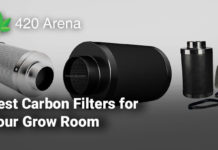
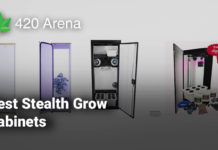
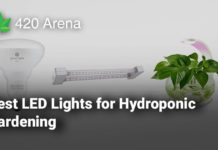

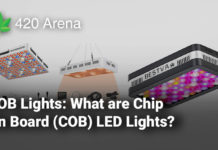

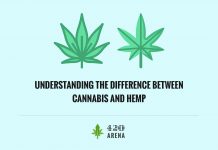
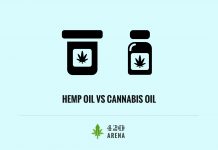
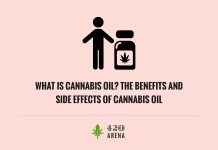

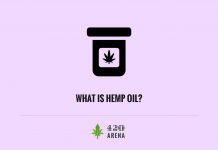
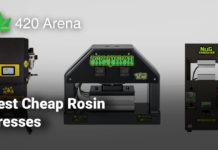
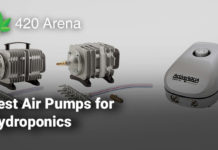
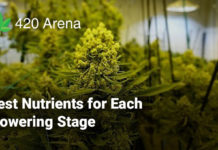
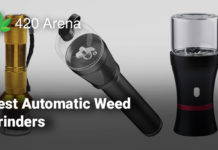
![How to Use Carbon Filters in Your Grow Room [7 Best Carbon Filters for Grow Rooms in 2021] How to Use Carbon Filters in Your Grow Room](https://420arena.com/wp-content/uploads/2020/12/How-to-Use-Carbon-Filters-in-Your-Grow-Room-218x150.jpg)





